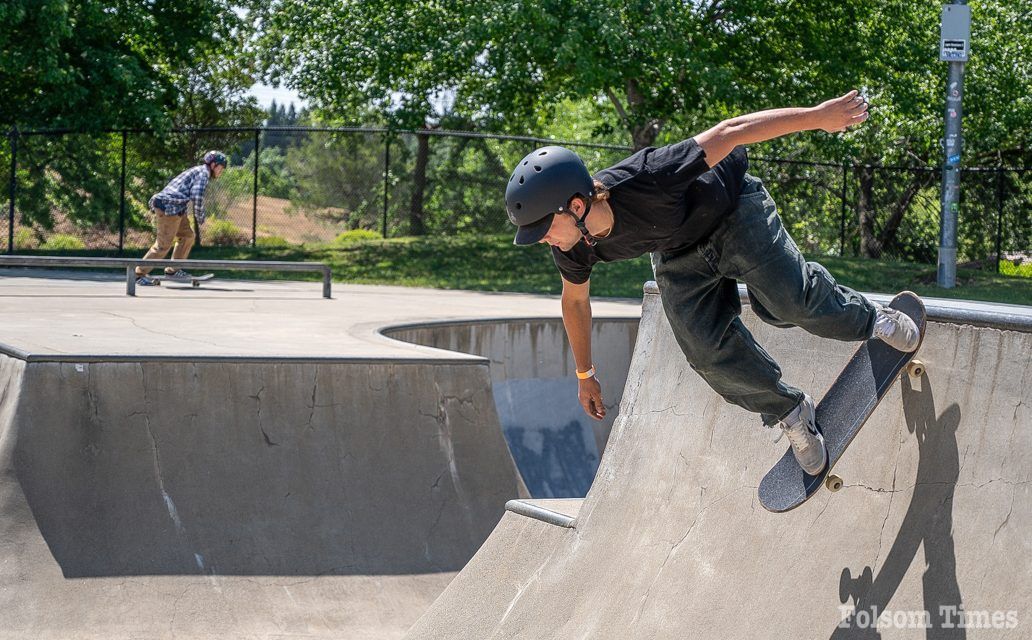On Tuesday night, the Folsom City Council approved a proposal to eliminate on-site supervision at the Cummings Family Skate and Bike Park, a move aimed at reducing operating costs as part of the city’s newly adopted fiscal year 2025–26 budget.
The decision, recommended jointly by the Parks and Recreation Department and the Parks and Recreation Commission, will save the city approximately $41,000 annually. An additional $14,500 will be redirected to install automated lighting controls at the facility. The action is one of several budget reduction strategies included in the city’s broader effort to close a projected $3 million general fund shortfall.
“This year, we’re recommending utilization of general fund reserves to allow ourselves more time to actually prudently plan for whatever those reductions end up being,” City Manager Brian Whitemyer said during the meeting. “Ultimately, to live within our means, we’re going to have to find a way to reduce our expenditures, which will ultimately translate into reductions in services.”
The skate park changes were adopted under Resolution No. 11407 and came alongside another council action Tuesday night—denying a community petition to relax safety equipment rules at the city-owned skate facility.
“Tonight, the department, along with the Parks and Recreation Commission, request the council to, one, deny the petition submitted to modify safety equipment requirements at the Folsom Skate Park… as well as to remove the supervision of the Cummings Family Skate and Bike Park staff and to post signage that is in compliance with the health and safety code in the Folsom Municipal Code,” said Tom Hellman of the Parks and Recreation Department during the staff presentation Tuesday night.
The petition, submitted by members of the public, had requested that safety gear—helmets, elbow pads, and knee pads—be strongly encouraged rather than required. However, city officials noted that such a change would violate California Health and Safety Code.
“The petition before you requests modification to the safety equipment to this skate park. It requests that all come in not be required, but only strongly encouraged,” said Hellman. “The reason we cannot modify that language is cited here in the health and safety code… talks about the operator of a skateboard park should not permit a person to ride unless that person is wearing a helmet, elbow pads, and knee pads.”
With supervision removed, the city is now required under state law to meet two legal conditions for continuing to operate the facility: it must maintain an adopted ordinance mandating the safety gear—which it already has—and post visible signage informing users of the requirement and potential citations for non-compliance.
“If we were to move forward with unsupervised, you will see that in the health and safety code, it talks about… if a park is not supervised on a regular basis, that the requirements must be satisfied by two items. One is the adoption of a local public agency of an ordinance, which we have already adopted,” Hellman explained. “The second is the posting of signs that let the facility afford reasonable notice that a person riding skate or wheel device in a facility must wear these things and that a person failing to do so will be subject to citation pursuant to the ordinance.”
According to the city staff report, the signage will be updated accordingly, and enforcement will focus on education and community awareness rather than punitive action. The Parks and Recreation Commission will review the impact of the changes after one year.
The skate park adjustment is one of the cost-saving measures approved by the Council this week as part of a $123.5 million general fund budget for fiscal year 2025–26. The adopted budget draws approximately $3 million from the city’s emergency reserves to close a structural deficit caused by increasing costs, particularly in salaries, benefits, and departmental operating expenses. According to the city staff report, $3 million in “true-up” adjustments were made across various departments to reflect current operational needs and contract obligations.See related Folsom Times story.
To further reduce the gap, the Council also suspended the city’s $427,000 annual contribution to its retiree health trust and approved the elimination of certain non-essential expenditures, including the skate park staffing. While the reserve drawdown will allow the city to preserve most services in the short term, it lowers the city’s unassigned fund balance to an estimated $19.1 million—or 15.5% of expenditures—falling below the city’s reserve policy target of 17% to 20%.
The budget, presented by City Manager Brian Whitemyer and Finance Director Stacey Tamagni, does not include specific layoffs but does maintain a cautious stance on hiring and expenditures. City leaders emphasized that continued use of reserves is not sustainable and warned that additional reductions may be necessary next year. “Ultimately, to live within our means, we’re going to have to find a way to reduce our expenditures, which will ultimately translate into reductions in services,” Whitemyer said during the meeting.
The budget also maintains funding for essential services and preserves the city’s Capital Improvement Plan, which funds long-term infrastructure projects such as road repairs, parks, and facility upgrades—many of which are supported by restricted funds and one-time grants rather than general fund dollars. The Council is expected to conduct a mid-year budget review in the fall to reassess revenues, spending, and potential adjustments for the remainder of the fiscal cycle.
The public can review all of the information presented at Tuesday’s meeting on the city’s official website athttps://www.folsom.ca.us.
Copyright © 2025, Folsom Times, a digital product of All Town Media LLC. All rights reserved. No portion of this publication may be reproduced, distributed, or transmitted in any form or by any means, without the prior written permission of the publisher.




